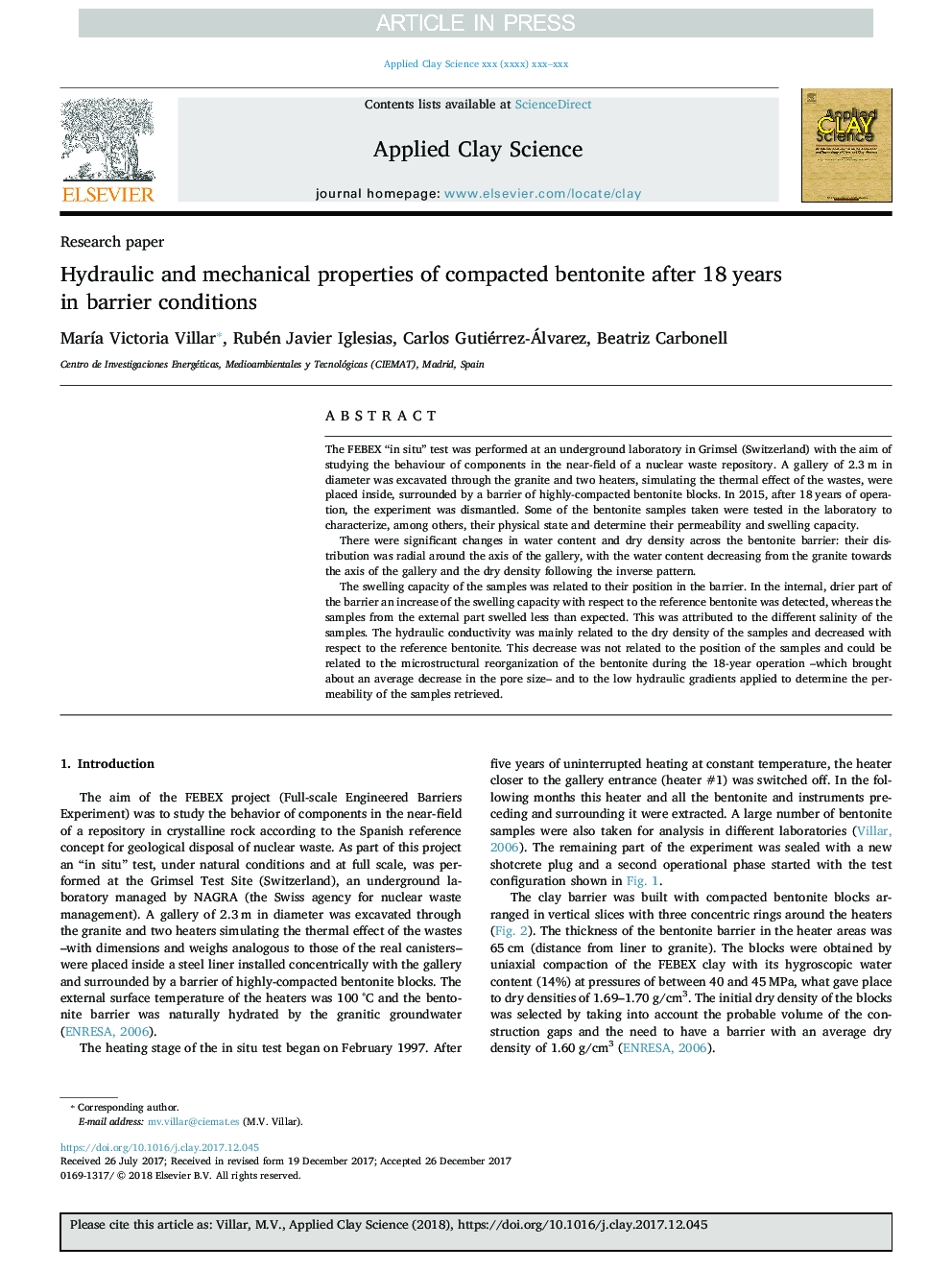| Article ID | Journal | Published Year | Pages | File Type |
|---|---|---|---|---|
| 8045805 | Applied Clay Science | 2018 | 9 Pages |
Abstract
The swelling capacity of the samples was related to their position in the barrier. In the internal, drier part of the barrier an increase of the swelling capacity with respect to the reference bentonite was detected, whereas the samples from the external part swelled less than expected. This was attributed to the different salinity of the samples. The hydraulic conductivity was mainly related to the dry density of the samples and decreased with respect to the reference bentonite. This decrease was not related to the position of the samples and could be related to the microstructural reorganization of the bentonite during the 18-year operation -which brought about an average decrease in the pore size- and to the low hydraulic gradients applied to determine the permeability of the samples retrieved.
Related Topics
Physical Sciences and Engineering
Earth and Planetary Sciences
Geochemistry and Petrology
Authors
MarÃa Victoria Villar, Rubén Javier Iglesias, Carlos Gutiérrez-Álvarez, Beatriz Carbonell,
